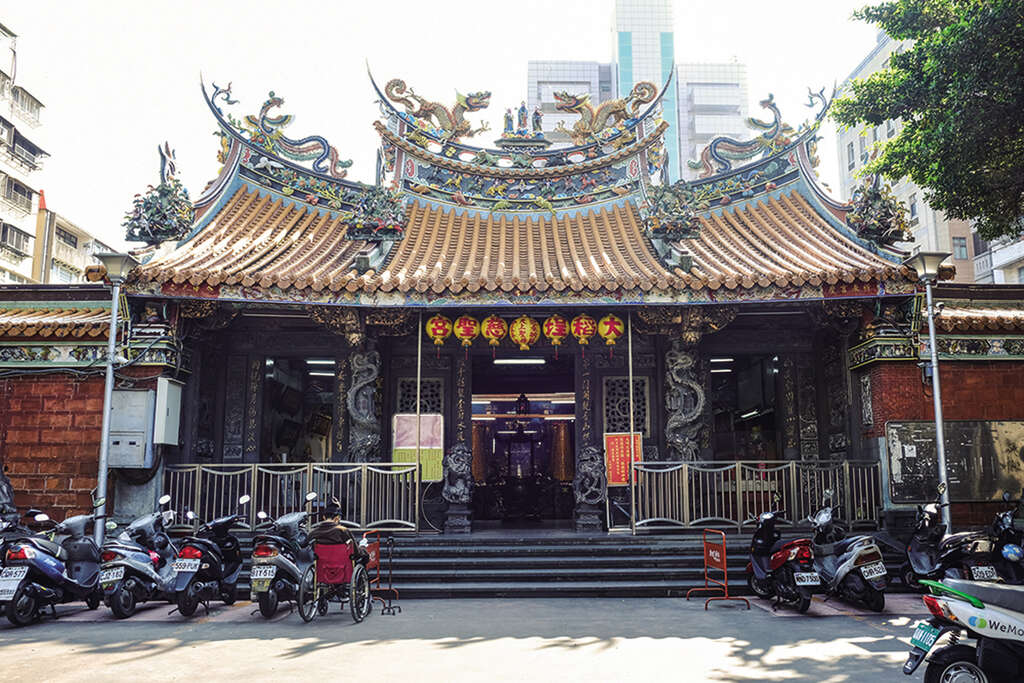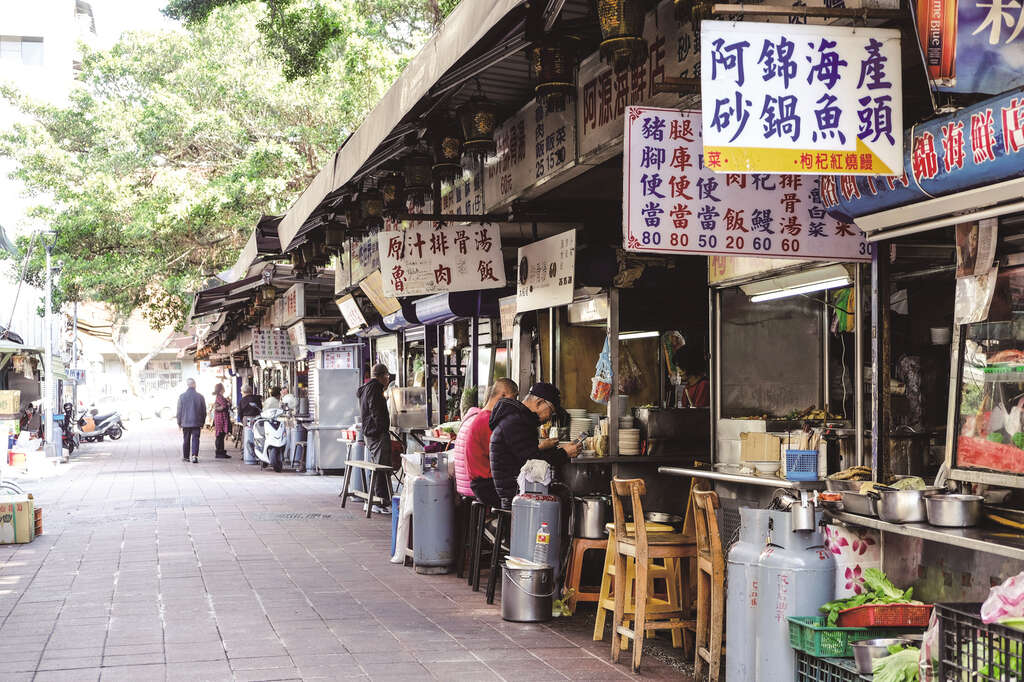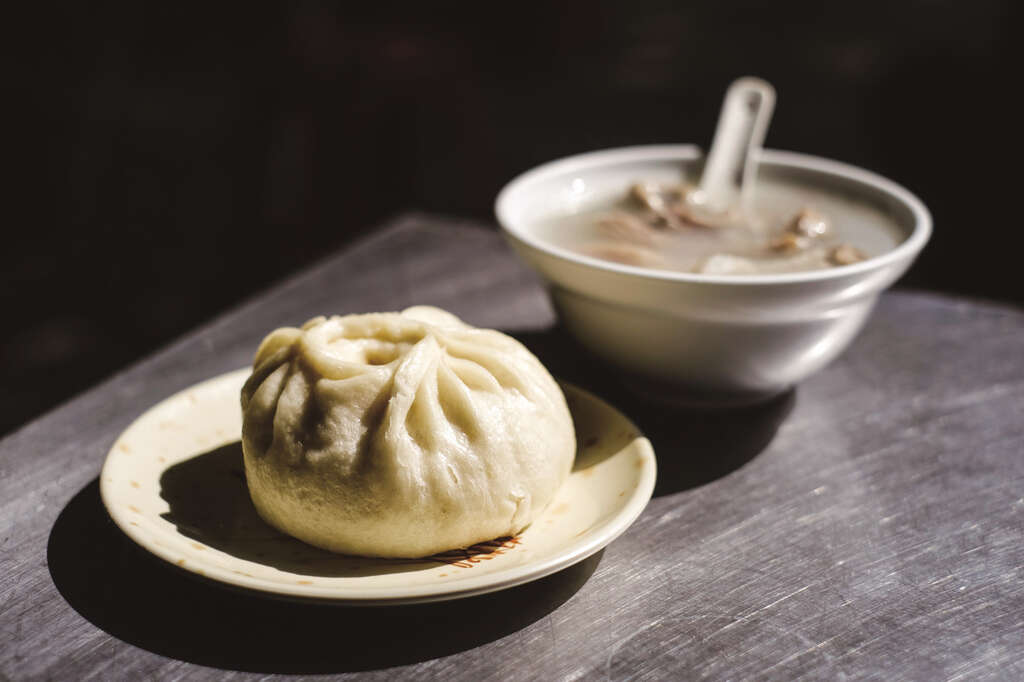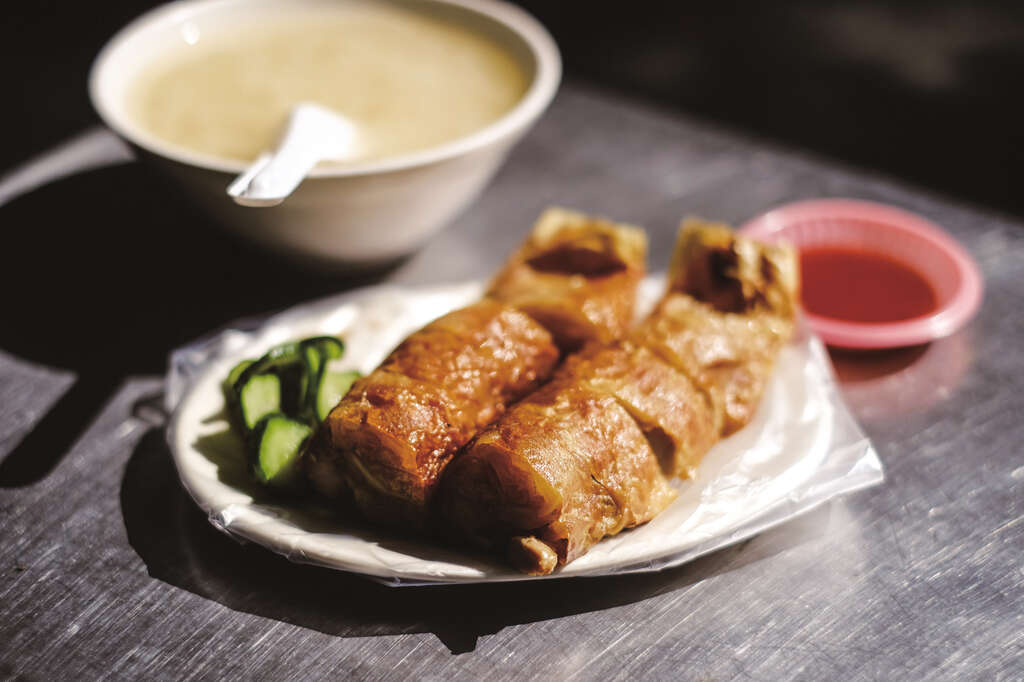WORDS BY Ryan Hong
PHOTOS BY Ryan Hong
TRANSLATION BY Joe Henley
Faith gathers people together. Just as temples in Taiwan are centers of prayer and divination, they also allow people to gather and chat over a cup of tea. But faith also serves as a beacon. There are different tastes in different parts of Taiwan, and you can always find the most authentic snacks by walking through the grand temple entrances. Following in the footsteps of the faithful, you are sure to find the best local delicacies.
There is perhaps no place like Taiwan, where religion and food are so deeply connected. In Taiwan, there’s an old saying: “tsē lâng hó-tsiah mih” (濟人好呷物), which means “foods taste better when shared.” The temple entrance and square are where large numbers of people come and go, and, understandably, become a place bustling with not only people but also all kinds of delicious street snacks, Oolong tea flavored melon seeds and noodles. If you want to eat authentic, cultural, humanistic, and local delicacies, the temple entrance is the best place to go.

TAIPEI DELICACIES AT CISHENG TEMPLE
From the south to the north, the temple entrance in every city acts as a kind of food distribution center. The flavors of local gourmets are rooted in the snack stalls in such places as Kaohsiung Guandi Temple (高雄關帝廟), Lugang Mazu Temple (鹿港天后宮), and Hsinchu City God Temple (新竹城隍廟). These places are also where local customs are always on full display. Similarly, Cisheng Temple in Dadaocheng (大稻埕慈聖宮) is where the flavors of Taipei can be found and enjoyed to the fullest. Cisheng Temple is unique in the highlydeveloped city of Taipei. Its main entrance is not on a main road, but in Lane 49 of Baoan Street (保安街), where lies a large temple yard and several banyan trees. Without over-decorated neon signage nor luxurious, modern facilities, it retains a most traditional yard for people to chat within, as well as a whole row of authentic snack stalls along the fence surrounding the temple entrance. (You might also like: Vintage Taipei in Dadaocheng)

SOLD OUT BY THE AFTERNOON: BRUNCH IN DADAOCHENG
The snacks found at Cisheng Temple are characterized by the limited timeframe in which they are available. If you come early in the morning or late in the afternoon, you might be out of luck. However, if you are there in time for brunch, your timing couldn’t be better. The Taiwan-style brunch here is provided in a nearly ritualistic manner: it must be served before the sun reaches its zenith, with one person sitting alone having meat congee (肉粥) or sharing fried rice and ding bian cuo (pot sticker soup, 鼎邊趖) with friends. You can have chicken rolls (雞捲) with steamed buns (饅頭) or four-herb soup (四神湯) with fried rice in different combinations for several days without worry of the meal becoming monotonous. What remains unchanged is the sunshine in the morning, the temple square full of human kindness, and the same good taste that has been a mainstay here for three generations and counting.
START WITH SOUP: A NOURISHING APPETIZER
The soup at Cisheng Temple is what this place is best known for. After all, a bowl of hot soup is the best way to awaken one’s appetite in the morning. A bowl of Ye Family Meat Congee (葉家肉粥) in the hands of a customer is one of the common morning sights at Cisheng Temple. Rice boiled with broth is not as soft in its consistency as Cantonese congee (廣東粥), but still chewy. The most recommended way is to enjoy it with all kinds of fried food, especially the combination of fried red-yeast pork (紅糟肉) and meat congee. A mouth of fried salty and crispy skin wrapped in half of the fat and lean pork with a mouth of congee is the most authentic flavor of all. (Read more: Why Dadaocheng should be your first stop in Taipei)
Of course, you should not miss out on the pork rib soup (排骨湯). This clear soup with a layer of light oil is mixed with lard and radish. The stewed pork ribs are stewed lightly and the meat falls away from the bones with the gentlest bite. With small radishes cut into cubes, the flesh and bones are made fresher and sweeter. The soup is so lip-smacking good that you will want to scoff the entire bowl in two or three mouthfuls.
Speaking of traditional soups, four-herb soup is another authentic Taiwanese food that is a must-try. Drinking four-herb soup in Taipei is absolutely indispensable along with a hot steamed meat bun! This special custom can be seen almost exclusively in Taipei, and at Cisheng Temple as well. The four-herb soup provided at the entrance of Cisheng Temple has a sweet taste of sugarcane, and its pig intestine (豬粉腸) is especially soft and tender. When having the steamed meat buns, pull apart the steamed fluffy wrapper, dip it in the soup and eat it, and then take another bite of the filling with its perfect proportion of fat and lean meat. Your taste buds will be absolutely satisfied!

CHANGE OF RICE: HAVE A TASTE HERE
The most delicious Taiwanese rice found among the food stalls at Cisheng Temple is probably that prepared at the famous A-lan’s fried rice (阿蘭炒飯). Different from the general fried rice that is fried in a frying pan, the one made by A-lan is made in an iron plate to make the rice more separated and distinct. The rice is evenly coated in a light soy sauce and decorated with scattered bits of fried egg. The dish encompasses an appetizing fragrance that leaves you with endless cravings later on. (If you’re into street food: Taiwan Culture and Cuisine Shine on New Netflix Series “Street Food”)
Rice can be cooked in countless forms, and ding bian cuo is a case in point. Ding bian cuo is made by spreading indica rice milk around the sides of a pan. There are many other ingredients in A-lan’s ding bian cuo, which includes not only daylily and bamboo shoots, both of which are interesting additions, but also pork liver, shrimp, and lean meat. In addition to this specialty, A-lan also serves up many other rice-based dishes.

THE GOLDEN CHICKEN ROLL WITH NO NAME
No matter what kind of food you like, you must try the famous golden chicken rolls when visiting Cisheng Temple. What’s interesting about this famous little shop is that it doesn’t have a name. The sign only says “chicken roll” in very large characters. As time went by, everyone came to call it “Nameless Chicken Roll.” Chicken rolls don’t actually have chicken inside, but they’re filled with onions and lean meat. The crispy, deep-fried skin is dipped in a savory sweet chilli sauce. Only after swallowing it can you understand why a dish that hasn’t had a name for decades sticks in people’s minds.

The food in Lane 49 of Baoan Street retains the simplest human kindness in its skilled preparation. The entrance and square of Cisheng Temple is a Taipei institution suspended in time, which has not changed for decades. You can take a leisurely morning stroll, chat with shop owners, order a few favorite dishes, sit on the tables and chairs in the temple square, and quietly eat a bowl of Taiwanese, Taipei-style and Dadaocheng-style brunch.
This article is reproduced under the permission of TAIPEI. Original content can be found at the website of Taipei Travel Net (www.travel.taipei/en).












